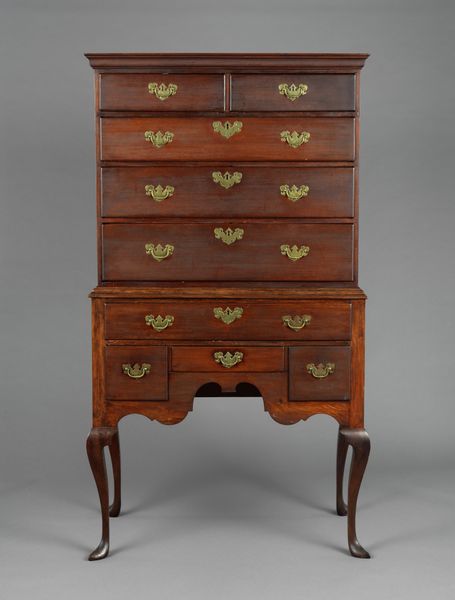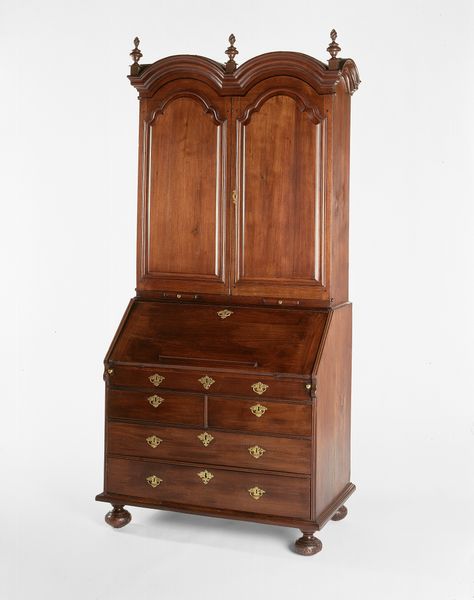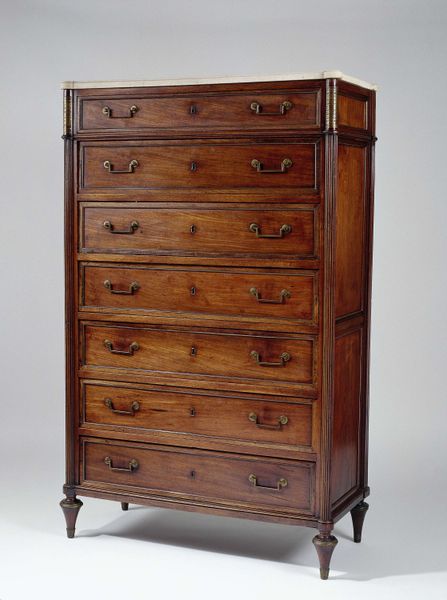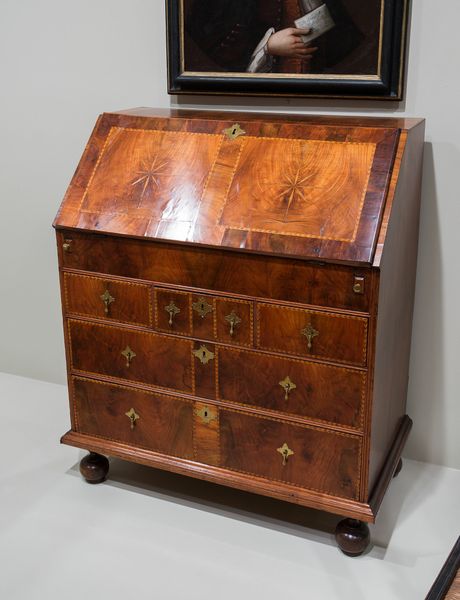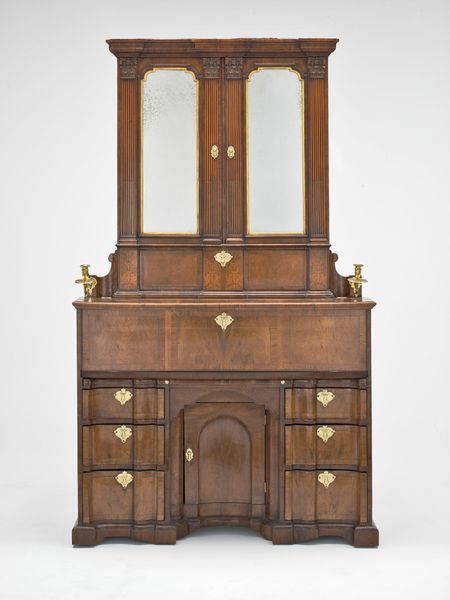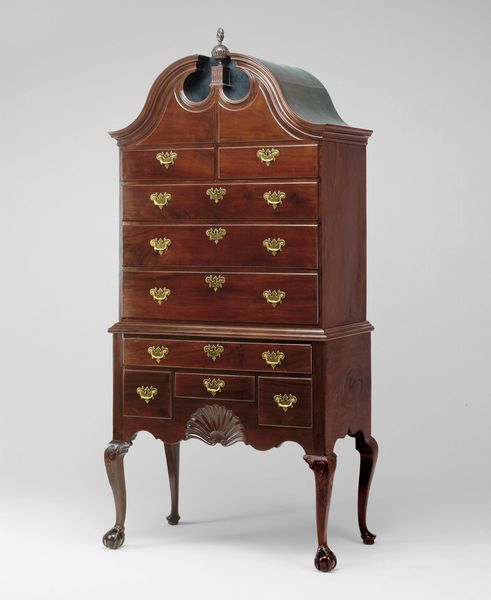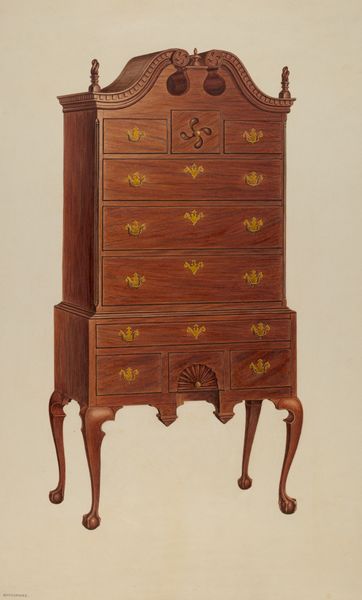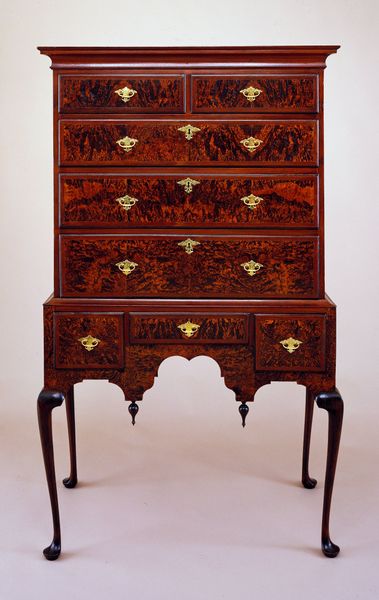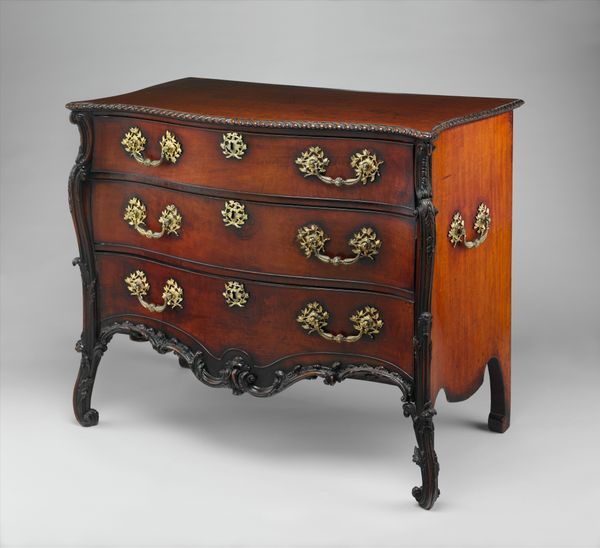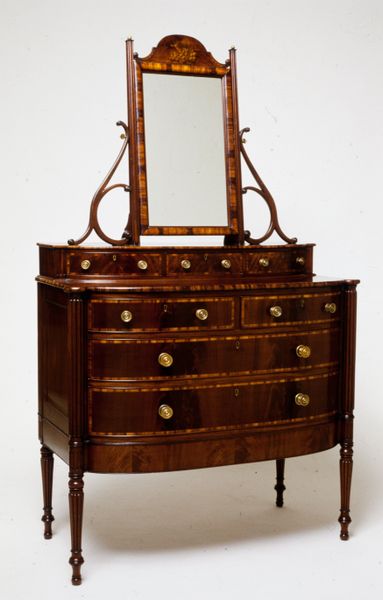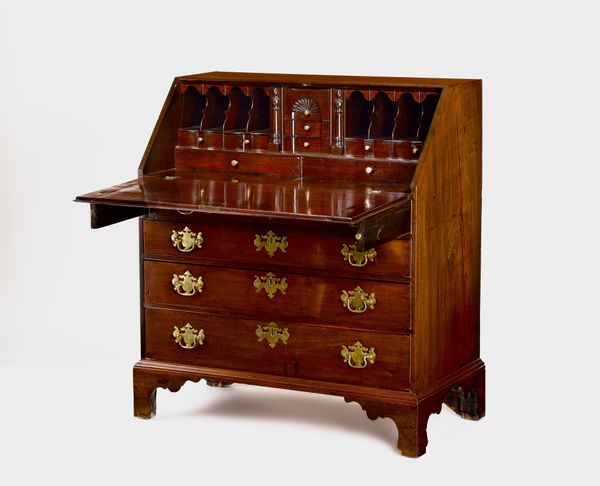
wood
#
baroque
#
wood
#
decorative-art
Dimensions: 153.2 × 108 × 59.1 cm (60 1/4 × 42 1/2 × 23 1/4 in.)
Copyright: Public Domain
Curator: This elegant "High Chest of Drawers" from 1700 to 1730 presents a compelling example of Baroque decorative art, currently residing here at the Art Institute of Chicago. Editor: Immediately, the surface's warm tones strike me. There's something comforting, yet undeniably hierarchical about its towering structure and segmented storage—almost architectural in its form. Curator: Precisely. The piece stands as a physical embodiment of status. Consider the rich wood grain, the symmetry of the drawer arrangement. Note how the cabinet's walnut wood is intricately veneered; this layering speaks volumes about material worth, its role as signifier of wealth during the period. Editor: I wonder, though, about whose wealth. This cabinet holds the secrets and stories of generations privileged enough to possess such ornamentation. Who made it? The artistry surely speaks of unseen labour, anonymous craftsmanship propping up elite displays. Curator: Undoubtedly. Although its provenance is unattributed, likely by a workshop. But turning our attention to form, one notes the harmonious interplay between verticality and horizontality, a visual echo reflecting ideals of social order itself during its creation. Editor: I keep circling back to the idea of domestic confinement and the objects contained within such drawers. Textiles, correspondence—a deeply personal history sealed away. It represents, for me, not just status but also a careful curation of identity within highly prescriptive social roles. Curator: Certainly, storage here becomes self-presentation through curated control of intimate possessions, but there is also simply the refinement in detailing – in line and curve – a study of how we shape, articulate and define luxury within constraints and convention. Editor: Absolutely. This commode becomes less about an object for containing precious possessions, and instead one used for presenting an upper-class persona by reinforcing power relations. I keep returning to the cabinet and considering class dynamics. Curator: Fascinating. From its Baroque articulation to its societal connotations, the High Chest presents us much to think on – from visual architecture to the power of possession. Editor: I find this glimpse into a hidden history fascinating: a subtle intersection between surface ornamentation and its social reflection of hierarchies – personal, political, and powerful.
Comments
No comments
Be the first to comment and join the conversation on the ultimate creative platform.

